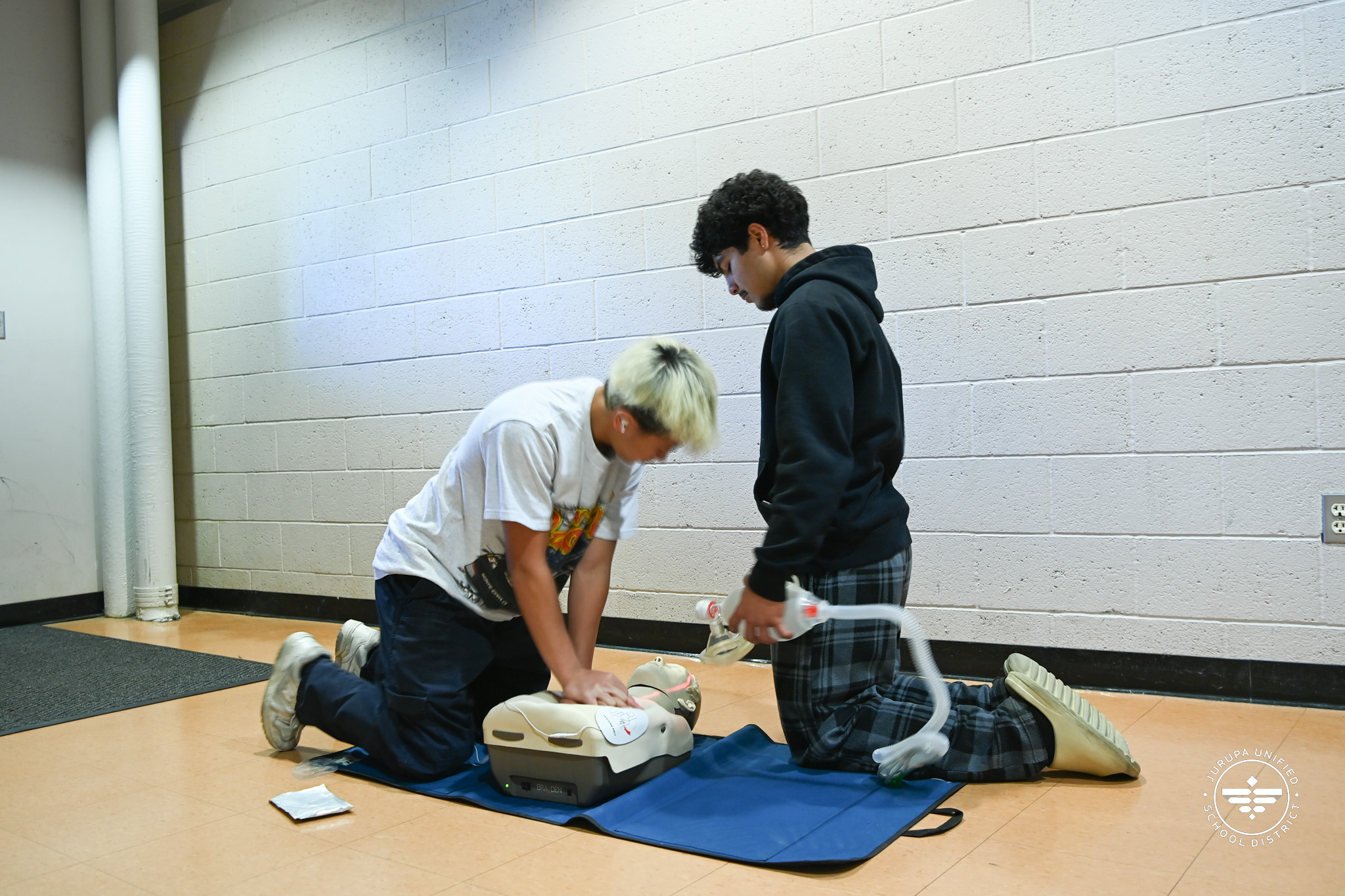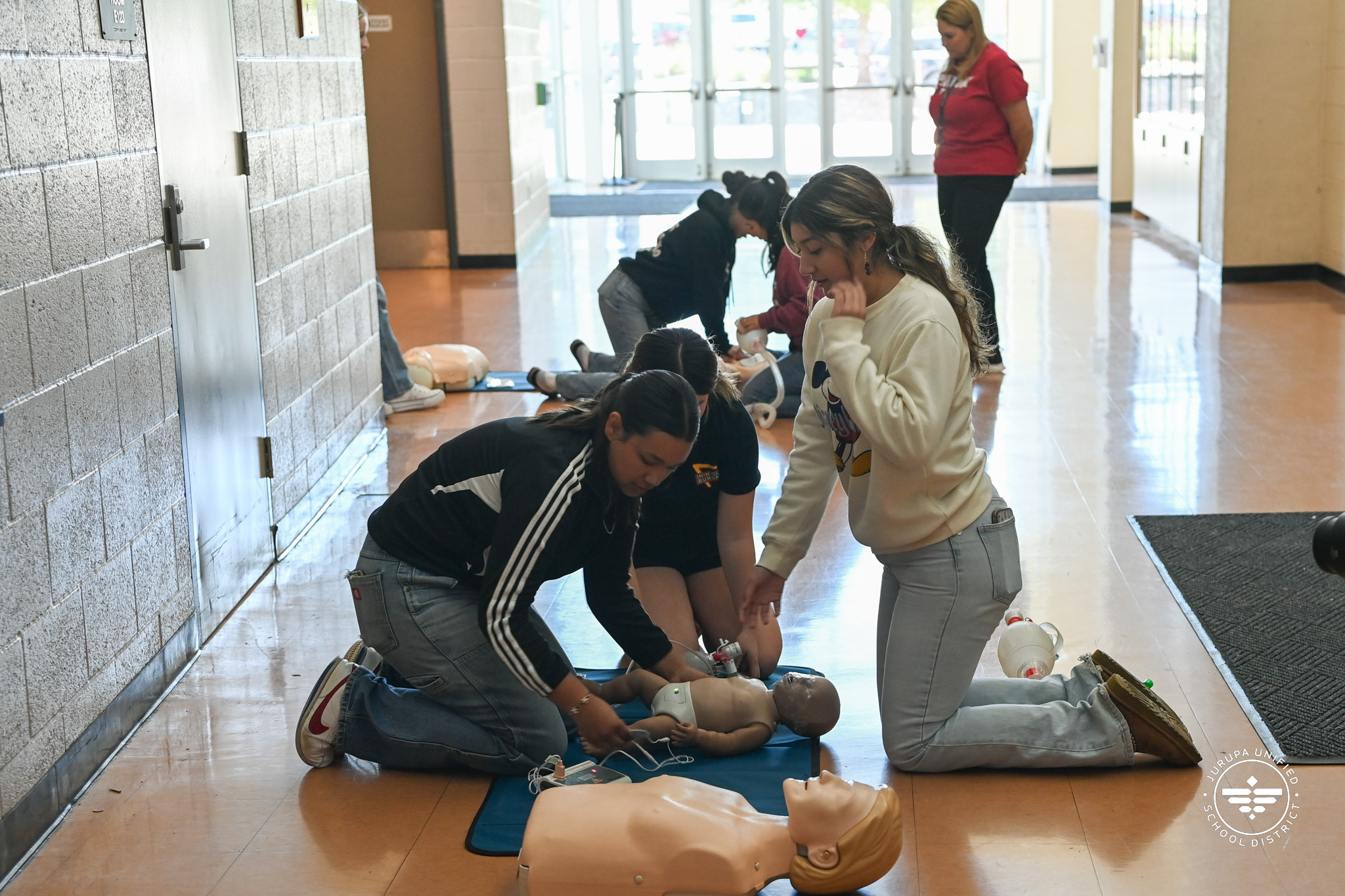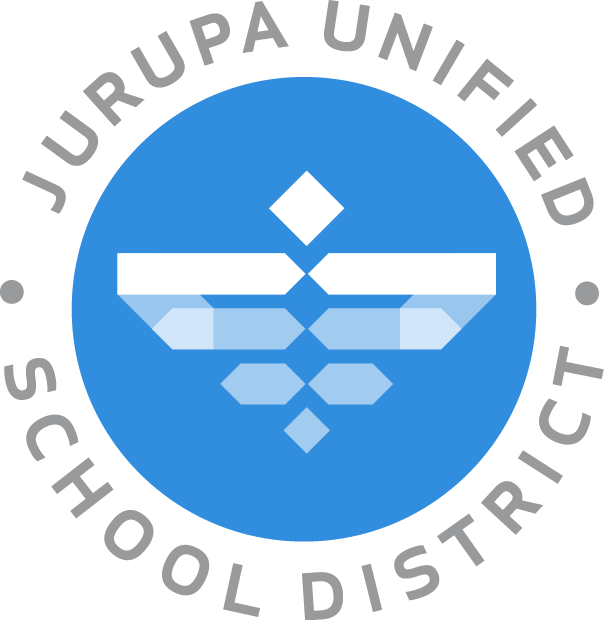When Patriot High School student Jesus Macias saw an elderly man fall near his school, “I ran over there to help him and…asked him all the basic questions like if he is ok, is he hurt, is he disoriented…” Jesus said. Using a hands-on approach, students enrolled in the Emergency Medicine pathway practice life-saving techniques and earn incredible certifications.
JUSD offers 27 CTE pathways across 11 industry sectors. These courses “prepare students for the next step in their career,” said Cynthia Cuccio, teacher and head athletic trainer at Patriot High. By enrolling in this pathway, students learn to assess a patient, take vital signs, determine an injury or illness, control bleeding, and become Cardiopulmonary Resuscitation (CPR)/First Aid and Occupational Safety and Health Administration (OSHA) certified.
-2.jpg) Additionally, students learn advanced skills such as delivering oxygen, using medical devices, and spineboarding. With this training, students qualify for entry-level jobs after graduating or have a head-start for further education.
Additionally, students learn advanced skills such as delivering oxygen, using medical devices, and spineboarding. With this training, students qualify for entry-level jobs after graduating or have a head-start for further education.
Students complete two courses for this pathway: Medical Professions and Public Safety/First Aid. Ms. Cuccio teaches another pathway, Sports Medicine, with two separate classes. Sports Medicine Advanced and Applied Kinesiology. Students are not required to complete both pathways, however many decide to.
Students enroll in Ms. Cuccio’s classes with a general interest in medicine. They are provided hands-on training throughout the course, which “opens their eyes to the other medical career fields that exist,” Ms. Cuccio said. Jesus expressed interest in search and rescue, for example. Senior Priscila Rodriguez, who completed the Sports Medicine pathway and is now enrolled in Public Safety/First Aid, said “I became interested in these classes because…I got surgery on my knee…that’s where I found the interest in becoming a physical therapist/athletic trainer.”
 “Yes we are learning EMT (Emergency Medical Technician) skills, but we are also just learning life skills…We recently learned what to do when there is a choking baby,” Priscila said. This pathway teaches students invaluable first-aid training that applies to real-world situations. “You never know when someone in your family or someone close to you might need CPR or might have a bleeding wound that you need to control,” Ms. Cuccio said.
“Yes we are learning EMT (Emergency Medical Technician) skills, but we are also just learning life skills…We recently learned what to do when there is a choking baby,” Priscila said. This pathway teaches students invaluable first-aid training that applies to real-world situations. “You never know when someone in your family or someone close to you might need CPR or might have a bleeding wound that you need to control,” Ms. Cuccio said.
Senior Izabella Zabala’s cousin was experiencing an allergic reaction. She “knew what to do” by retrieving her cousin’s epinephrine pen. At that moment, she recalled her training from class and did not panic. Now she’s planning to become a registered nurse.“I feel like it's important (to learn this in high school) because, when I go to try and become a nurse at RCC, I feel like I already know it and I’ll be above everybody. So it’s a higher chance…because it’s a very competitive field,” Izabella said.
 “I just want the students to walk out of here being as prepared as possible for the next step in their journey, whether that’s going straight into a career field…going into a technical education college, or whether it's going to a community college, a Cal State, or a UC. I’m hoping they are able to take the information from this class and use it to help them with those next steps,” Ms. Cuccio said.
“I just want the students to walk out of here being as prepared as possible for the next step in their journey, whether that’s going straight into a career field…going into a technical education college, or whether it's going to a community college, a Cal State, or a UC. I’m hoping they are able to take the information from this class and use it to help them with those next steps,” Ms. Cuccio said.

